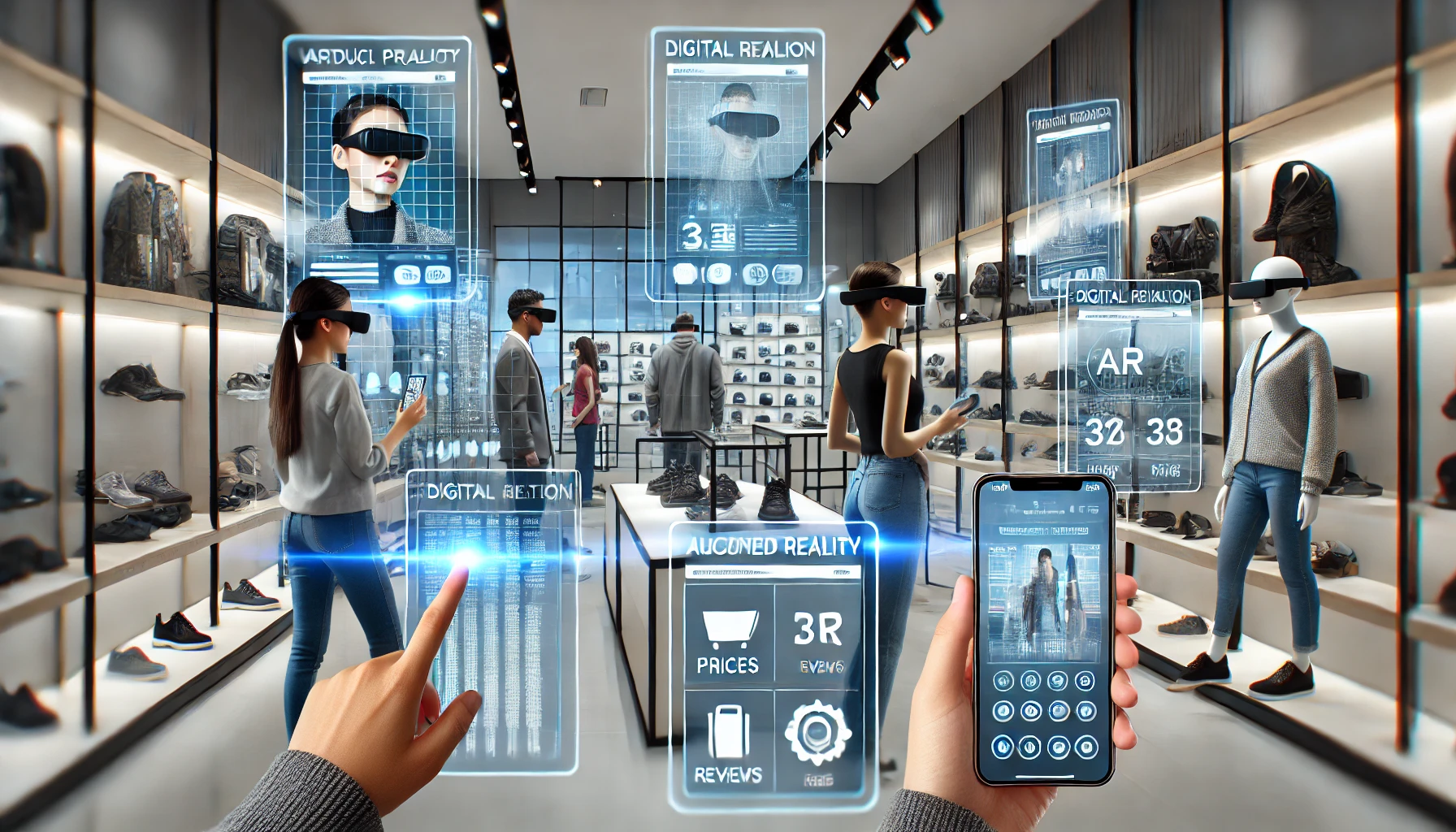How to Implement Augmented Reality in Retail
In today’s fast-paced digital world, Augmented Reality (AR) has emerged as a game-changer for the retail industry. It offers an immersive and interactive experience that can transform the way customers shop. By blending the physical and digital worlds, AR enables retailers to enhance customer engagement, increase sales, and stay ahead of the competition. In this comprehensive guide, we’ll walk you through the steps to implement AR in your retail business, providing practical tips and real-world examples to help you succeed.
Understanding Augmented Reality
Augmented Reality is a technology that overlays digital content, such as images, videos, and sounds, onto the real world. Unlike Virtual Reality (VR), which creates a completely immersive experience, AR enhances the real-world environment with digital elements. This makes it an ideal tool for retail, where customers can interact with products in a more engaging and informative way.
Benefits of AR in Retail
Before diving into the implementation process, let’s explore the key benefits of using AR in retail:
- Enhanced Customer Experience: AR provides an interactive shopping experience that allows customers to visualize products in their real-world environment.
- Increased Engagement: AR applications can make shopping fun and engaging, encouraging customers to spend more time in-store or on your website.
- Improved Decision Making: By offering a virtual try-on or product visualization, AR helps customers make informed purchasing decisions.
- Competitive Advantage: Adopting AR can set your brand apart from competitors, showcasing your commitment to innovation and customer satisfaction.
- Higher Conversion Rates: With a better understanding of how products fit into their lives, customers are more likely to complete a purchase.
Steps to Implement AR in Retail
Implementing AR in retail requires careful planning and execution. Here are the steps to get you started:
1. Define Your Goals
Before investing in AR technology, it’s crucial to define your objectives. Ask yourself what you want to achieve with AR. Are you looking to enhance the in-store experience, boost online sales, or both? Clear goals will guide your AR strategy and help you measure its success.
2. Choose the Right Augmented Reality Technology
There are various AR technologies available, each with its own features and capabilities. Some popular options include:
- Marker-Based AR: Uses images or objects as markers to trigger digital content.
- Markerless AR: Uses GPS, accelerometer, or other sensors to overlay digital content without markers.
- Projection-Based AR: Projects digital images onto physical surfaces.
- Superimposition-Based AR: Replaces the view of an object with an augmented view.
Evaluate these options based on your goals and budget to choose the right technology for your retail business.
3. Develop AR Content
Content is the heart of any AR application. Depending on your goals, you might need to create 3D models, animations, videos, or interactive experiences. Collaborate with experienced AR developers and designers to create high-quality content that resonates with your audience.
4. Integrate AR with Your Retail Platform
For a seamless customer experience, integrate AR with your existing retail platform. This could involve embedding AR features in your mobile app, website, or in-store kiosks. Ensure that the integration is smooth and user-friendly to encourage adoption.
5. Train Your Staff
Introducing new technology can be challenging for your team. Provide comprehensive training to your staff on how to use AR tools and assist customers. This will ensure that your team can effectively support and enhance the AR experience for your customers.
6. Promote Your AR Features
Once your AR application is ready, it’s time to promote it. Use your marketing channels, such as social media, email newsletters, and in-store signage, to inform customers about your new AR features. Highlight the benefits and encourage customers to try it out.
7. Monitor and Optimize
After launching your AR application, continuously monitor its performance. Gather feedback from customers and analyze usage data to identify areas for improvement. Regular updates and optimizations will ensure that your AR features remain relevant and engaging.
Real-World Examples of AR in Retail
To inspire your AR implementation, here are some successful examples from leading retailers:
- IKEA Place: IKEA’s AR app allows customers to place true-to-scale 3D models of furniture in their homes using their smartphones. This helps customers visualize how products will look and fit in their space before making a purchase.
- Sephora Virtual Artist: Sephora’s AR app enables customers to try on makeup virtually. By scanning their face, customers can see how different products will look on their skin, helping them make confident purchasing decisions.
- Nike Fit: Nike’s AR app scans customers’ feet to recommend the best shoe size and style. This reduces the likelihood of returns and enhances the online shopping experience.
Enhancing Customer Experience with AR
Implementing Augmented Reality in retail can significantly enhance the customer experience by providing an interactive and immersive shopping journey. By integrating AR into your retail strategy, you can create unique and engaging touchpoints that resonate with your audience. Augmented Reality in retail allows customers to visualize products in their environment, try on items virtually, and access detailed product information seamlessly. This innovative approach not only improves customer satisfaction but also drives higher conversion rates and boosts brand loyalty. By staying ahead of the curve and embracing AR technology, you can set your retail business apart from the competition and offer a shopping experience that is both memorable and impactful.
Conclusion
Implementing Augmented Reality in retail is a strategic move that can revolutionize the way you engage with customers. By following the steps outlined in this guide, you can successfully integrate AR into your retail business and enjoy the numerous benefits it offers. From enhancing customer experience to gaining a competitive edge, AR has the potential to transform your retail operations and drive growth. Stay innovative, keep your customers at the forefront, and embrace the power of AR to elevate your retail experience.







